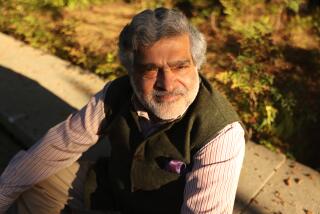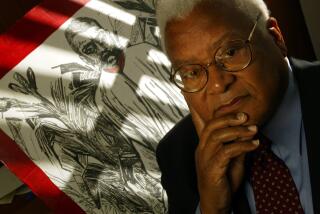Racial Harmony--By the Numbers : Two friends write a book containing 602 ways for people to respect one another--and heal a sense of injustice in : the process.
- Share via
The riots compelled Joycelyn and I to write “Talking Justice: 602 Ways to Build and Promote Racial Harmony.” We’d both been introduced to racism--like the experience of going into a store and feeling that I wasn’t wanted--and Joycelyn and I had been frustrated by the decision in the Latasha Harlins case. But, with the first Rodney King beating trial, we had hoped for the best.
I remember the day the verdicts came down. I was at work when I saw the city going up in flames, I was crying, I felt hopeless. I was afraid that we African-Americans didn’t count.
I went back to work in Orange County the next day and the people around me were talking about the riots. They were very insensitive, saying it was an African-American thing. I wanted to sit each one of them down and tell them: Rodney King is a human being. No person, regardless of their race, deserved the treatment that he received. I was just really upset. I said to myself, “I have to do something--something positive--to deal with this.”
I called Joycelyn from work and said, “Guess what! We’re going to write a book about racial harmony. The book will teach people how to deal with other people from other cultures, how to be accepting to the ideas of all people.” Joycelyn agreed and we began to write.
We tried to cover a broad territory. The format was specifically designed so that the young and old can open the book and immediately identify with something.
We listed ways that were in direct response to situations that we, or someone we knew, had experienced.
We wrote No. 376, “Do not teach your children that a person with blond hair and blue eyes is the epitome of beauty. There is a range of beauty from alabaster to ebony,” when I recalled that one day at work some employees were commenting on how attractive a particular 11-year-old boy happened to be. Then a co-worker turned to the Hispanic boy and said that he would be “. . . good-looking, if you had blond hair and blue eyes.”
No. 36, “Assumptions based on the judgment of someone’s race is an injustice,” was written specifically for Latasha Harlins, the youth who was judged for her race and her clothing. That misunderstanding led to her being shot in the back of the head over a disputed bottle of orange juice.
No. 264, “When those who are charged to ‘protect and serve’ are treated above the law, that is an injustice,” was, of course, written for Rodney King.
No. 217, “Teach your children that a true democracy will have equal representation from all races, ethnicities and genders, in all levels of society,” was written after I encountered a skinhead, who told me, “Black people need to go back where they come from.” He didn’t understand that his ancestors also had come from somewhere other than America.
A parent told me that his son had made a racist remark. The parent’s reaction to the comment was to laugh. In response to this type of mentality, we wrote No. 511: “If your children make racist comments in your presence and you do not reprimand them, you are condoning racism and setting a poor example for your children.”
Joycelyn and I are only two people, but we both believe that we all have a place in America, we all deserve to be here. The bottom line is respect: respect for each other, regardless of what color you are, where you come from or what your background is.
Writing this book actually healed us. Joycelyn and I found hope within ourselves. We hope that other people learn from it so that something like the riots in Los Angeles will never happen again.
More to Read
Sign up for our Book Club newsletter
Get the latest news, events and more from the Los Angeles Times Book Club, and help us get L.A. reading and talking.
You may occasionally receive promotional content from the Los Angeles Times.









